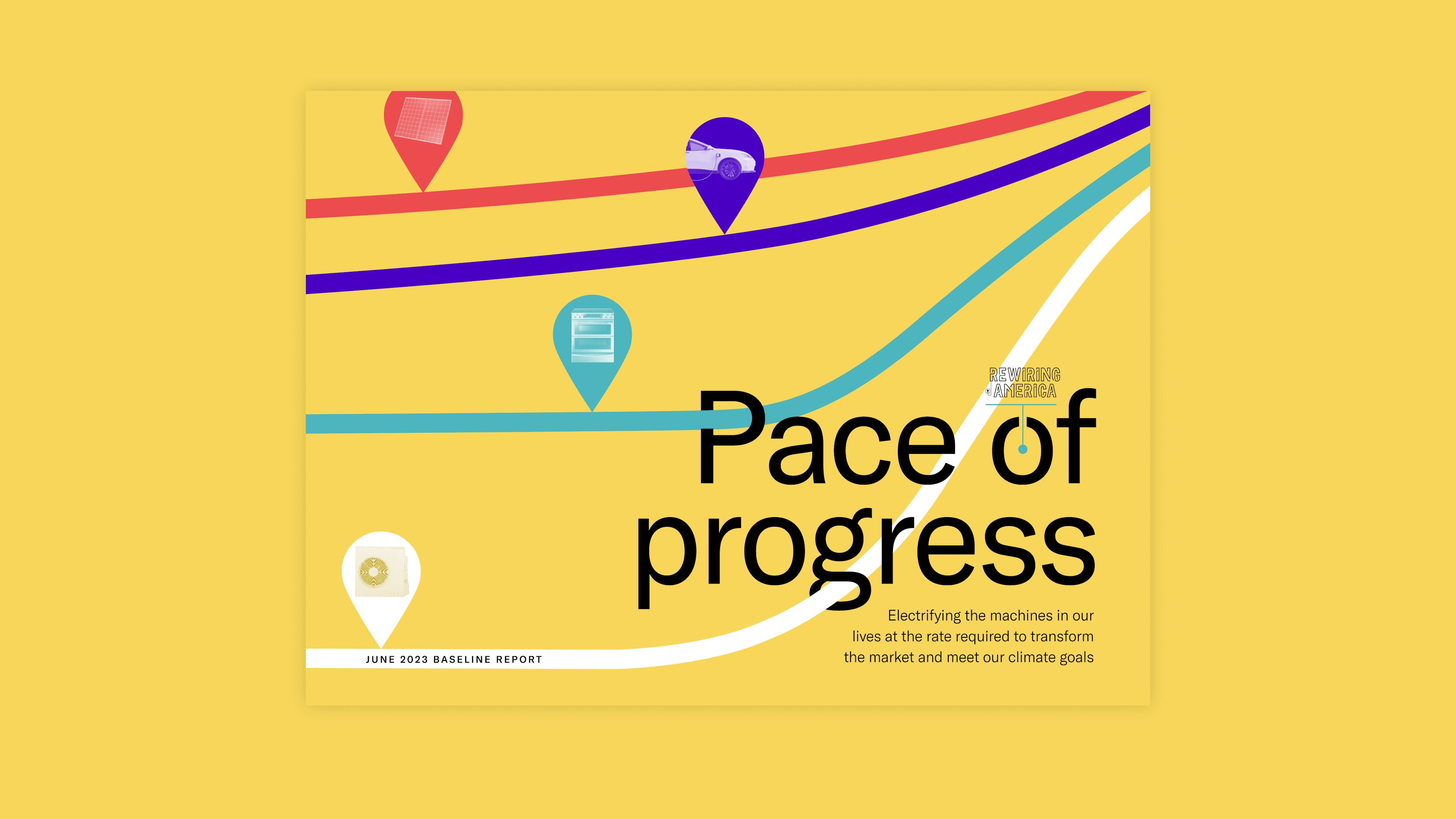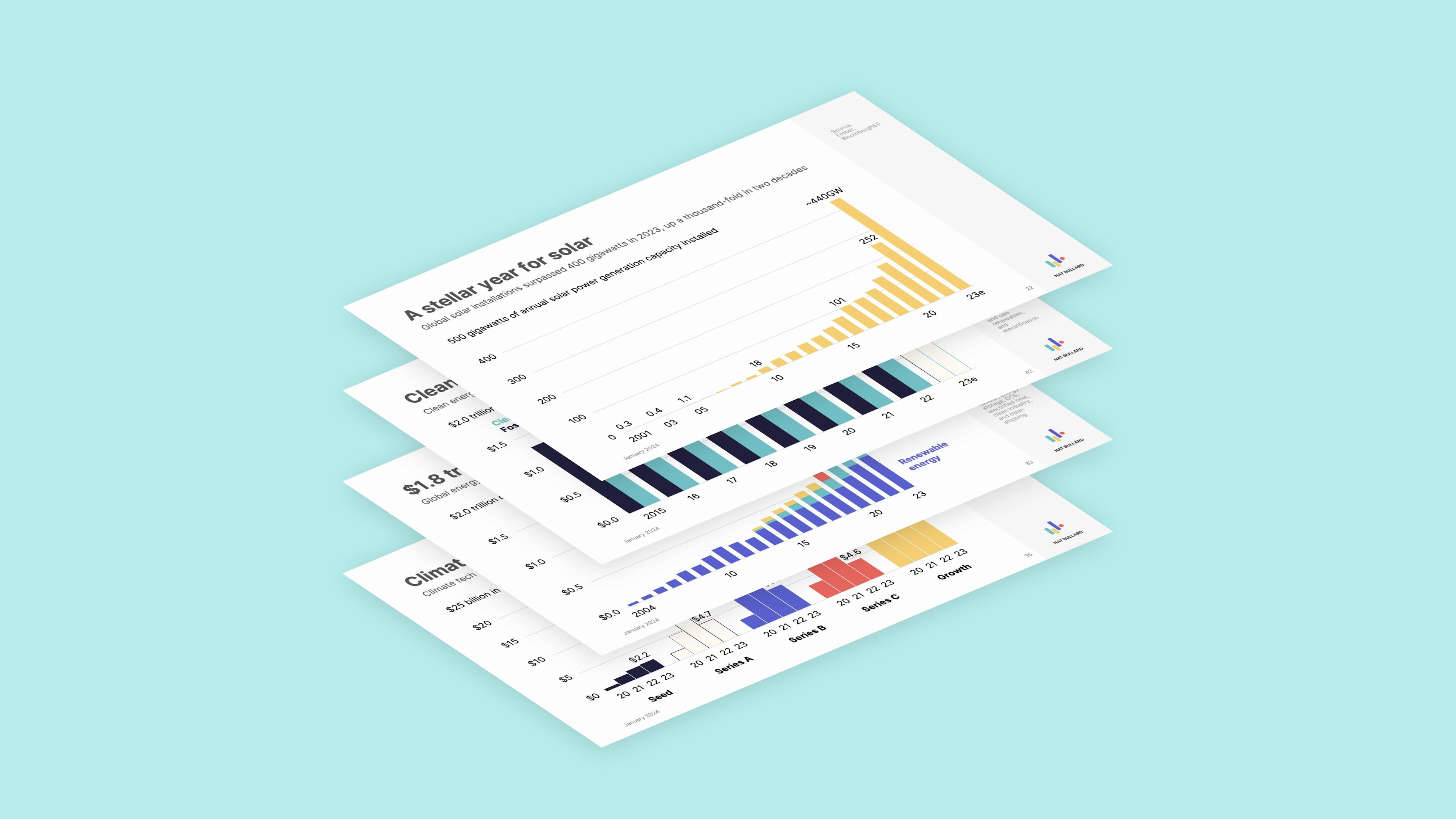What Rewiring America’s Pace of Progress Report teaches us

It’s hard to get a good handle on where we are in the fight against climate change. On one hand, the Intergovernmental Panel on Climate Change (IPCC) and other organizations have set a goal of zeroing out our national greenhouse gas emissions by 2050. On the other, only 26% of Americans use electricity for all their household energy needs, and only 4% of Americans own an electric vehicle.
So, are we winning the race? Have we even started?
That’s what Rewiring America addresses in their new Pace of Progress report. This inaugural report puts real numbers to the goal of electrifying all American households by 2050, quantifying exactly how many households we need to electrify each year.
Electrification is near and dear to Arcadia’s heart — we’re actually one of seven organizations partnering with Rewiring American on their consumer outreach campaign. The coalition aims to educate Americans about electrifying their homes, rebates, tax incentives, cost calculators, and more.
We sat down with Rewiring American to learn more about the Pace of Progress report. We spoke with Jordan Fontenot, Communications Manager, and Tarren Peterson, Research Analyst to get the inside scoop. The good news: We’re on the right track towards Rewiring’s ambitious goal to “electrify everything.”
Q: What does electrifying American households actually mean?
Electrification refers to shifting away from vehicles and appliances that use fossil fuels to ones that run on electricity. Decarbonizing the American home will be one of many vital steps in achieving electrification by 2050.
For the majority of American households, the following devices are powered by fossil fuels:
- HVAC systems
- Water heaters
- Gas stoves
- Vehicles
- And technically…everything else in their homes when they’re powered by an electrical grid that hasn’t yet been decarbonized.
The average consumer may not be able to do much about how electricity is generated and fed into their local power grid, but they can make changes in their daily life to reduce their carbon footprint.
For example, only 16% of American households use electric heat pumps for space heating, but the Pace of Progress report suggests that we target 100% adoption by 2050. That’s a tangible goal we can work toward!
“Rewiring America is working to electrify everything: our communities, our homes, our schools. We’re involved on the policy side and the implementation side. We’re working alongside low-income and disadvantaged communities because we want to make sure everyone has access to these resources.”
Q: What does the S-curve have to do with electrification?
To understand the report, you must first understand the technology adoption S-curve. When a new technology is introduced to the market, initial adoption is slow due to a lack of awareness and consumer trust, high costs, and potential risks.
As more early adopters implement the technology and find success, awareness spreads, and the adoption rate begins to increase steeply. When the technology reaches market saturation, that rate flattens out once more.
See how this played out for technological advancements, like the electric engine, electricity, refrigerators, color TVs, and cell phones, in this graphic from the report.

Because this is a well-known phenomenon, it’s safe to theorize that the adoption of electrification technology will follow a similar pattern. Right now, household electrification technology is in the early adoption phase, and the US hasn’t yet reached that steep spike in adoption.
Q: What are major takeaways from the report?
According to Tarren, the main thing Rewiring America wants readers to take away from this report is that “these goals are ambitious, but actually really attainable.”
What the nation does in the next few years will have a massive impact on our ability to hit our goals. Based on the S-curve, we know adoption rates will snowball. For example, as contractors in Chicago become more familiar with heat pump water heaters, they’ll be more likely to recommend them to customers.
Right now is the perfect time to educate US citizens, work to lower the costs of electric appliances and vehicles, and partner with policymakers to break down remaining barriers. Together, we can bring about that spike in nationwide adoption sooner.
Q: What’s next for the Pace of Progress initiative?
The first iteration of this report shows these trends at the national level, and the team at Rewiring America recognizes that the numbers can seem daunting. Their next goal is to dive deeper and publish similar data at the state and local levels. These more localized numbers will help policymakers see how attainable these goals are for their constituents.
“Our goal in releasing these at a much more localized level is to bring it down to a scale that peoples’ minds can wrap around more easily. We want to show policymakers how attainable decarbonize housing stock in their state or county is.”
Tarren shared a great example of this in action. Based on their research, Cook County, IL only needs to convert 13,000 homes to heat pump water heaters between 2024-2026 to be on track. That’s 13K homes out of a housing stock of two million.
Rewiring America also plans to partner with manufacturers and retailers for more insight into how many units are being produced and sold each year, which they’ll measure against the Pace of Progress goals.
Q: What does this mean for the individual consumer?
“You don’t have to go out and replace all your appliances and buy a new car tomorrow," Peterson told us. "We recommend a more gradual approach. When your devices reach their natural end of life, simply replace them with electric versions.”
Soon, Rewiring America will publish a Personal Electrification Planning Tool to help you understand how to get started and what you should prioritize. Also, keep in mind that you can always support these initiatives from the ground up by advocating for electrification at your local or state level.
One change you can make today
Here at Arcadia, we view community solar as the lowest-hanging fruit, if you will, on your electrification journey. In many cases, rooftop solar is simply unattainable for many Americans due to cost, logistics, and other factors.
However, community solar — where you subscribe to a local solar farm in exchange for credits on your electric bill — makes solar accessible to more of the population.

See if community solar is available in your area
Check availabilityAbout Rewiring America
Rewiring America is the leading electrification nonprofit, focused on electrifying our homes, businesses, and communities. We develop accessible, actionable data and tools, and build coalitions and partnerships to make going electric easier for households and communities. Rewiring America helps Americans save money, tackle nationwide emissions goals, improve health, and build the next generation of the clean energy workforce. We believe in an abundant, flourishing, climate-safe future, and know that, together, we can realize one.


